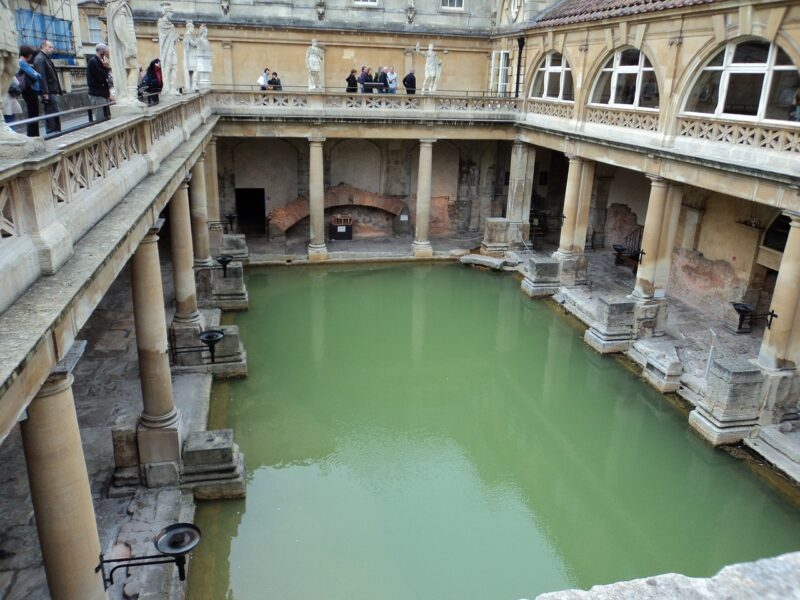
The ancient Romans are famed not only for their military conquests and architectural feats but also for their profound appreciation of cleanliness and social interaction, epitomized in the widespread popularity of public baths. Far more than mere places to wash, these society-centric complexes served a pivotal role in Roman life—combining hygiene, leisure, and even politics.
1. The Historical Context of Roman Baths
Public baths in ancient Rome, known as ‘thermae’, date back to the early Roman Republic, although their popularity surged during the Imperial period (27 BC – 476 AD). Captivated by the Greek traditions of bathing, the Romans transformed these practices, introducing advanced engineering techniques and elegant designs.
The initial baths catered primarily to men, as women had to wait until the late afternoon or early evening to access them. Hygiene was a significant aspect of life in Roman society, driven by the belief that cleanliness was integral to moral conduct. Additionally, it reflected personal status and respectability; hence, assessing one’s hygiene was, in many ways, a social statement.
2. Architectural Marvels: The Structure of Thermae
Understanding the allure of Roman baths requires appreciation for their splendid architecture. Most thermae were expansive complexes that included the following sections:
- Apodyterium: The changing room where bathers would store their clothes and belongings.
- Frigidarium: A cold room containing a cold plunge pool, allowing patrons to invigorate before and after bathing.
- Tepidarium: A warm room designed to prepare bathers for the hotter baths, often featuring heated floors.
- Caldarium: The hot bath area equipped with bubbling hot pools and steam rooms, ideal for relaxing and cleansing the body.
These sophisticated facilities were often lavishly decorated with mosaics, frescoes, and sculptures, turning hygiene rituals into multi-sensory experiences.
3. Socializing and Entertainment in the Baths
The Roman baths transcended their role as places for personal hygiene; they evolved into vibrant social hubs. These establishments welcomed citizens from all walks of life, allowing for interactions among diverse social classes. Within these settings, men and women could forge friendships, conclude business deals, or simply discuss societal matters.
Traditionally, bathhouses featured other amenities, such as:
- Libraries and lecture halls: Many complexes included spaces for educational pursuits and philosophical discussions.
- Sports facilities: Exercise areas for activities such as wrestling, weightlifting, and ball games were often part of the layout.
- Food and drink: Many baths featured cafés and snack bars serving light refreshments and wine, making them ideal spots for leisurely social interaction after bathing rituals.
Through these bustling environments, public baths fostered a strong sense of community—uniting individuals around shared experiences in the quest for cleanliness and relaxation.
4. Hygiene Practices: Culture and Ritual
The Romans had a sophisticated understanding of hygiene, which was reflected in their bathing rituals. Regular bathing was considered vital not just for personal health, but also for mental well-being. Moreover, the concept of hygiene was perceived as a crucial duty of citizens to uphold public decorum and social order.
They often used a range of cleaning techniques, including:
- Strigil: A curved metal tool used to scrape off dirt, sweat, and oil from the skin, promoting cleanliness while also exfoliating the skin.
- Scented oils and fragrances: Bathers often applied aromatic oils post-bathing, enhancing their smell and overall aesthetics.
- Public fountains and aqueducts: Romans constructed aqueducts to supply fresh water directly into baths, ensuring cleanliness and promoting access to water for a wider populace.
Through these practices, the Romans demonstrated their commitment to health, cleanliness, and their flourishing public health infrastructure.
5. The Decline of Public Baths
While public baths thrived in the Roman Empire, their influence declined significantly by the late Roman Empire period (around the 3rd century AD). Factors that contributed to this decline included:
- Economic strain: As the empire faced economic challenges, maintaining large public works like baths became burdensome.
- Changing social norms: The rise of Christianity brought about shifts in societal values regarding nudity and leisure practices.
- Health concerns: The spread of diseases during this period led many to associate communal bathing with health risks, causing a social stigma against public baths.
Consequently, many baths fell into disrepair, and their societal role began to diminish, marking a significant shift in communal hygiene practices.
6. Conclusion: The Enduring Legacy of Roman Baths
Despite their decline, the legacy of Roman public baths is undeniable. They symbolize a civilization that prioritized hygiene, social interaction, and community well-being. The architectural innovations of the thermae influenced subsequent cultures and inspired modern spa cultures reflective of these ancient practices. Furthermore, the Roman emphasis on cleanliness and public health remains relevant today as we continue to understand the importance of sanitation and social spaces that enhance community bonds.
In exploring Roman public baths, we gain not only a glimpse into their innovative sanitation practices but also an insight into a civilization’s culture that valued health, social interaction, and progress.
If you’re ever in Italy, be sure to visit the ruins of places like the Baths of Caracalla or the Baths of Diocletian to truly appreciate the grandeur and significance of these ancient structures.








